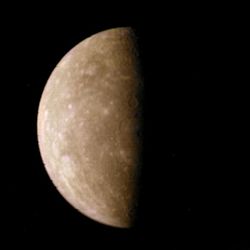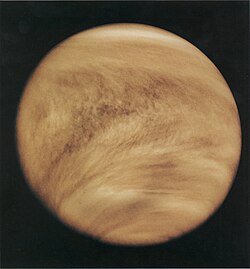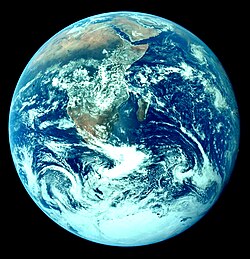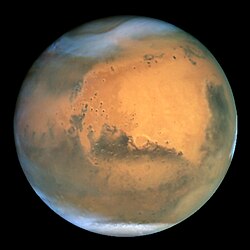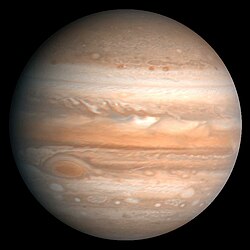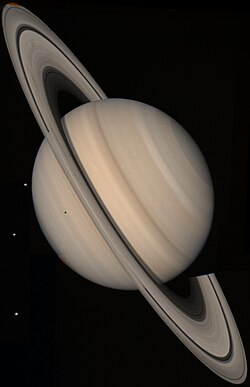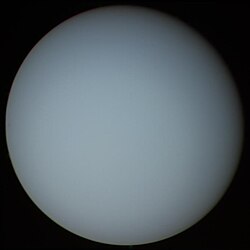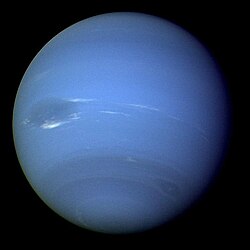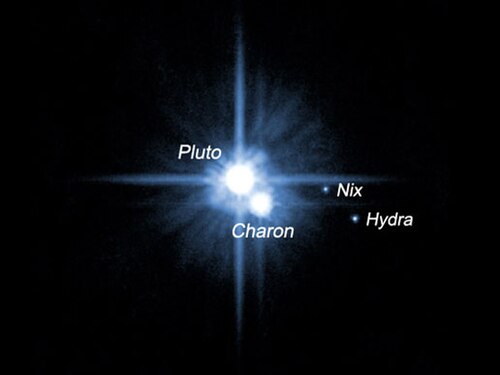Difference between revisions of "AY Honors/Stars/Planet characteristics/en"
(Updating to match new version of source page) |
(Updating to match new version of source page) |
||
| Line 51: | Line 51: | ||
Through the use of the Hubble Space Telescope, Pluto's fourth moon was discovered between the orbits of Nix and Hydra. Without a formal name as yet it is designated as S/2011 (134340 Pluto) or simply the nickname P4. | Through the use of the Hubble Space Telescope, Pluto's fourth moon was discovered between the orbits of Nix and Hydra. Without a formal name as yet it is designated as S/2011 (134340 Pluto) or simply the nickname P4. | ||
<noinclude></noinclude> | <noinclude></noinclude> | ||
| − | |||
Latest revision as of 03:59, 15 July 2022
Uranus and Neptune cannot be seen with the naked eye. Mercury and Venus are only seen near the hours of sunrise and sunset because they are closer to the Sun than the Earth.
Mercury
Mercury is the planet closest to the Sun. It orbits the Sun once every 88 Earth-days. Mercury has very little atmosphere because its gravity is so weak due to its small size. Like the Moon, Mercury's lack of an atmosphere means that it is struck often by other bodies, leaving its surface cratered. If it had a thicker atmosphere, these objects would burn up before they reached the surface. Another similarity between Mercury and the Moon is that Mercury's day is equal to its year at 88 days.
Venus
Venus is the second-closest planet to the Sun, orbiting it every 224.7 Earth days. After Earth's Moon, it is the brightest object in the night sky. Venus is one of the four terrestrial planets, meaning that, like the Earth, it is a rocky body. In size and mass, it is very similar to the Earth, and is often described as its 'twin'. The diameter of Venus is only 650 km less than the Earth's, and its mass is 80% of the Earth's. However, conditions on the Venusian surface differ radically from those on Earth, due to its dense carbon dioxide atmosphere. The enormously CO2-rich atmosphere generates a strong greenhouse effect that raises the surface temperature to over 400 °C. This makes Venus' surface hotter than Mercury's, even though Venus is nearly twice as distant from the Sun and receives only 25% of the solar irradiance.
Earth
Earth is the only planet in the Solar System that supports life. Its atmosphere protects the Earth's life forms by absorbing ultraviolet solar radiation, moderating temperature extremes, transporting water vapor, and providing useful gases. The atmosphere is also one of the principal components in determining the weather and climate of the Earth.
Mars
Mars is the fourth planet from the Sun in our solar system. Mars is also known as "The Red Planet" due to the reddish appearance it has when seen from Earth at night. Mars has two moons, Phobos and Deimos, which are small and oddly-shaped and are possibly captured asteroids. Until the first flyby of Mars by Mariner 4 in 1965, it was thought that Mars had channels of liquid water. We now know that these channels do not exist. Still, of any planet in our solar system after the Earth, Mars is the most likely to harbor liquid water. It is the only planet besides Earth that has seasons. It also has a rotational period nearly the same as our own. It has the highest mountain in the solar system, Olympus Mons, the largest canyon in the solar system, Valles Marineris, and polar ice caps. Water was discovered on Mars in 2015.
Jupiter
Jupiter is the fifth planet from the Sun and by far the largest within the solar system. Jupiter is usually the fourth brightest object in the sky (after the Sun, the Moon and Venus); however at times Mars appears brighter than Jupiter. Jupiter is 2.5 times more massive than all the other planets combined. Jupiter also has the fastest rotation rate of any planet within the solar system, making a complete rotation on its axis in slightly less than ten hours, which results in an equatorial bulge easily seen through an Earth-based amateur telescope. Jupiter is perpetually covered with a layer of clouds, and it may not have any solid surface in that the density may simply increase gradually as you move towards the core. Its best known feature is the Great Red Spot, a storm larger than Earth.
Saturn
Saturn is the sixth planet from the Sun. It is a gas giant (also known as a Jovian planet, after the planet Jupiter), the second-largest planet in the solar system after Jupiter. Saturn is probably best known for its planetary rings, which make it one of the most visually remarkable objects in the solar system. Saturn is the only one of the Solar System's planets less dense than water, with an average specific density of 0.69. This means that Saturn would float if you had a large enough body of water to place it in. Like Jupiter, it radiates more energy into space than it receives from the Sun.
Saturn has a large number of moons. The precise figure is uncertain as the orbiting chunks of ice in Saturn's rings are all technically moons, and it is difficult to draw a distinction between a large ring particle and a tiny moon. Seven of the moons are massive enough to have collapsed into a spheroid under their own gravitation. Saturn's most noteworthy moon is Titan, the only moon in the solar system to have a dense atmosphere.
Uranus
Uranus is the seventh planet from the Sun. It is a gas giant, the third largest by diameter and fourth largest by mass. Uranus is composed primarily of gas and various ices. The atmosphere is about 85% hydrogen, 15% helium and traces of methane, while the interior is richer in heavier elements, most likely compounds of oxygen, carbon, and nitrogen, as well as rocky materials. This is in contrast to Jupiter and Saturn which are mostly hydrogen and helium. One of the most distinctive features of Uranus is its axial tilt of ninety-eight degrees. Consequently, for part of its orbit one pole faces the Sun continually while the other pole faces away. At the other side of Uranus' orbit the orientation of the poles towards the Sun is reversed. Between these two extremes of its orbit the Sun rises and sets around the equator normally!
Neptune
Neptune is the outermost gas giant in our solar system. It orbits the Sun once every 165 years. It is the fourth largest planet by diameter and the third largest by mass; Neptune is more massive than its near twin Uranus as its stronger gravitational field has compressed it to a higher density. Neptune's atmosphere is primarily composed of hydrogen and helium, with traces of methane that account for the planet's blue appearance. Neptune also has the strongest winds of any planet in the solar system, with estimates as high as 1550 MPH (2,500 km/h). Discovered on September 23, 1846, Neptune is notable for being the only planet discovered based on mathematical prediction rather than regular observations. Perturbations in the orbit of Uranus led astronomers to deduce Neptune's existence. One difference between Neptune and Uranus is the level of meteorological activity. Uranus is visually quite bland, while Neptune's high winds come with notable weather phenomena. The Great Dark Spot, a cyclonic storm system the size of Asia, was captured by Voyager 2 in the 1989 flyby. The storm resembled the Great Red Spot of Jupiter, but was shown to have disappeared in June 1994. However, a newer image of the planet taken by the Hubble Space Telescope on November 2, 1994, revealed that a smaller storm similar to its predecessor had formed over Neptune’s Northern Hemisphere. Unique among the gas giants is the presence of high clouds casting shadows on the opaque cloud deck below.
Pluto
Pluto is no longer considered a planet by astronomers, though it was classed as one between its discovery in 1930 and 2006 when it was reclassified a dwarf planet. It has an eccentric orbit that is highly inclined with respect to the other planets and takes it closer to the Sun than Neptune during a portion of its orbit. It is much smaller than any of the eight planets and indeed is smaller than several of their moons, including Earth's moon. Pluto itself has a large moon named Charon; two small moons were discovered in 2005, and their names (Hydra and Nix) were announced in June 2006.
Through the use of the Hubble Space Telescope, Pluto's fourth moon was discovered between the orbits of Nix and Hydra. Without a formal name as yet it is designated as S/2011 (134340 Pluto) or simply the nickname P4.
